20 February 2025
![]() 5 mins Read
5 mins Read
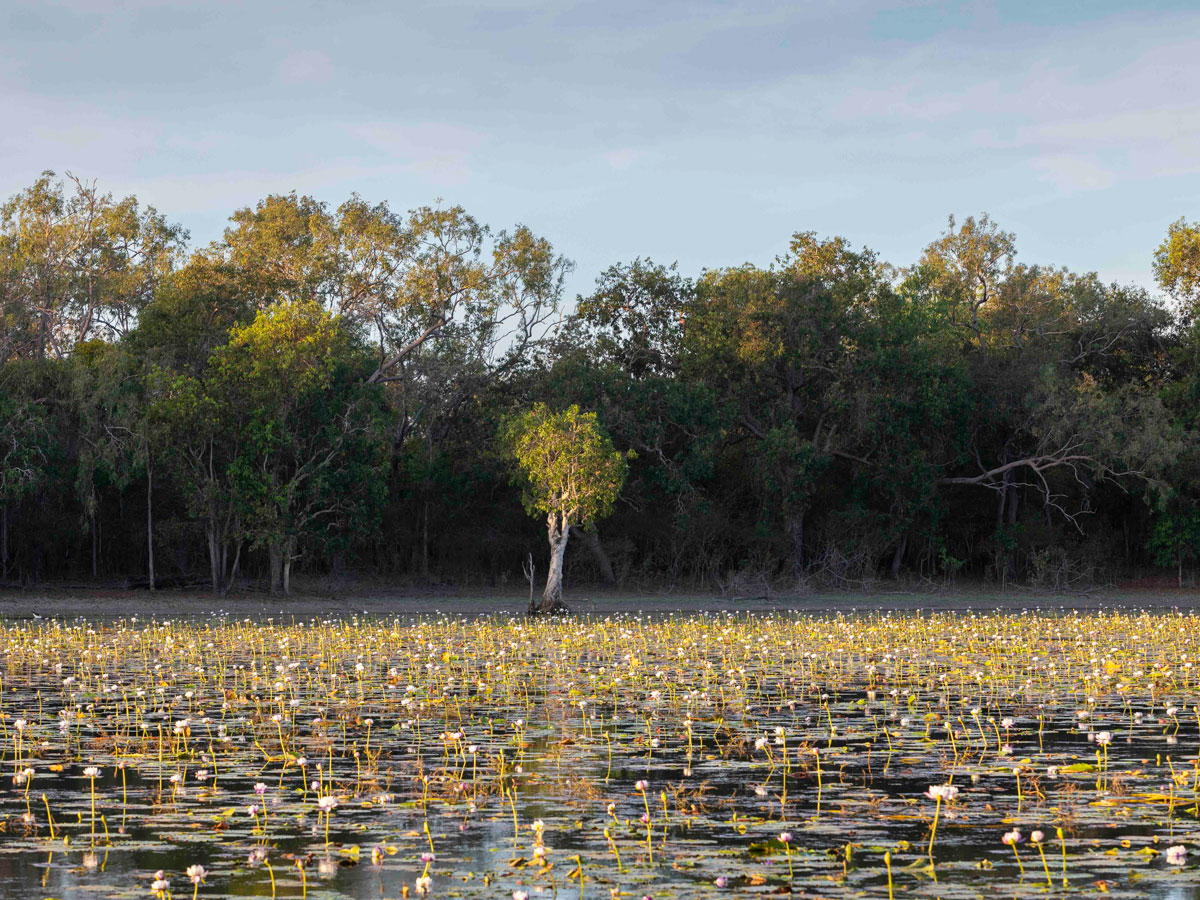
I’m a little nervous as I walk down towards the Normanby River at Kalpowar Crossing. The waterways around here, inside Queensland’s Rinyirru National Park, are notorious for two resident species.
The first of those, barramundi, are prized by anglers and best cooked over hot coals, with perhaps a squeeze of lemon. The second, estuarine crocodiles, are likely to reverse that scenario.
There’s already a man up ahead standing by the riverbank, though not too close to risk being trapped inside the jaws of a dinosaur. He’s wearing the Cape York Peninsula uniform of garish fishing polo and trucker cap over quick-dry shorts and thongs so, rather obviously, I ask him if he’s come here to fish for barra.
“No chance,” he says, shaking his head vigorously. “I’m not going near that water. We’re just happy having a few days’ camping.”
I have to admit I’m envious. He and his travelling companions look like they’ve chosen a lovely spot to camp, back from the river among some stately eucalypts. But that river’s proximity would still worry me.
Though I can’t see any, I have little doubt crocs would be lurking somewhere in those waters, waiting patiently for a slip in concentration or a moment’s misplaced bravado. In fact, I’m certain of it, especially after hearing the tragic story about the owner of Laura’s Peninsula Hotel being taken by a croc not far from here a couple of years back.
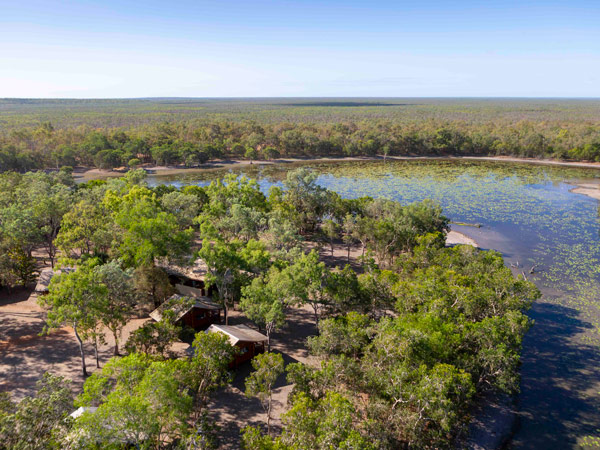
Lotusbird Lodge sits on a lagoon edge. (Image: Mark Daffey)
Our base for exploring Queensland’s second-largest national park over two days is the Outback Spirit-owned Lotusbird Lodge. It’s a little further up the road, just outside its western boundary, where the countryside mirrors that inside the park.
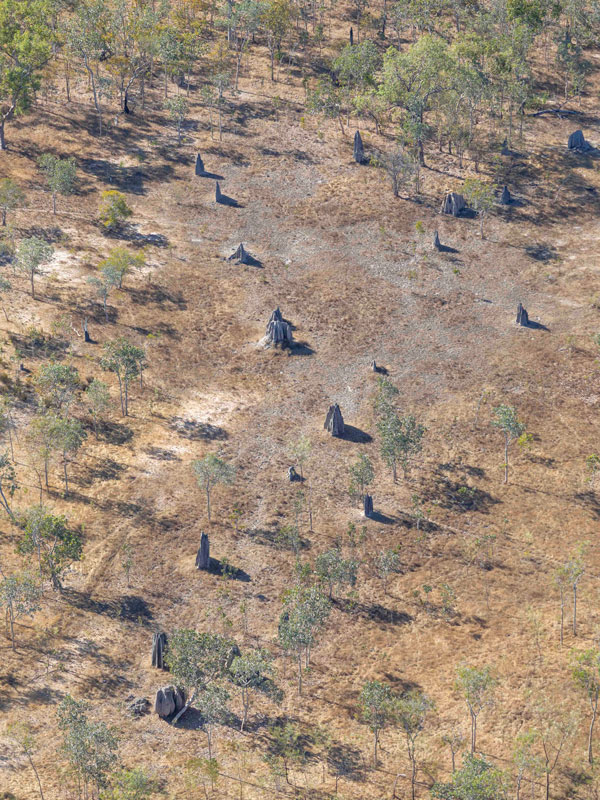
Termite mounds as seen from above. (Image: Mark Daffey)
In places, spindly eucalypts and ironwood trees sprout from plains plagued by termite mounds. In others, extensive paperbark forests fringe marshy swamps. The one constant is the presence of water; the park is a natural floodplain.
On my first morning at the lodge, I’m roused by birdsong and jump out of bed to walk down to a blackwater lagoon shaded by Leichhardt, bloodwood and black wattle trees. Wandering-whistling ducks and magpie geese mill around the water’s edge.
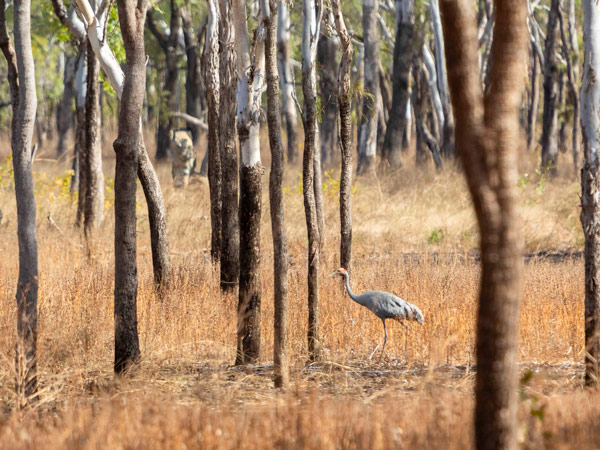
The brolga, Australia’s largest waterbird. (Image: Mark Daffey)
Black ibises fly overhead. Egrets tiptoe through the shallows and jacanas tap-dance across lily pads on the water’s surface. Darters perch on fallen tree trunks, drying outstretched wings. A shy jabiru keeps watch from the opposite bank.
I can’t see any crocodiles in the water, and nor do any appear to be sunning themselves on the banks. But of course, that doesn’t mean they’re not around.
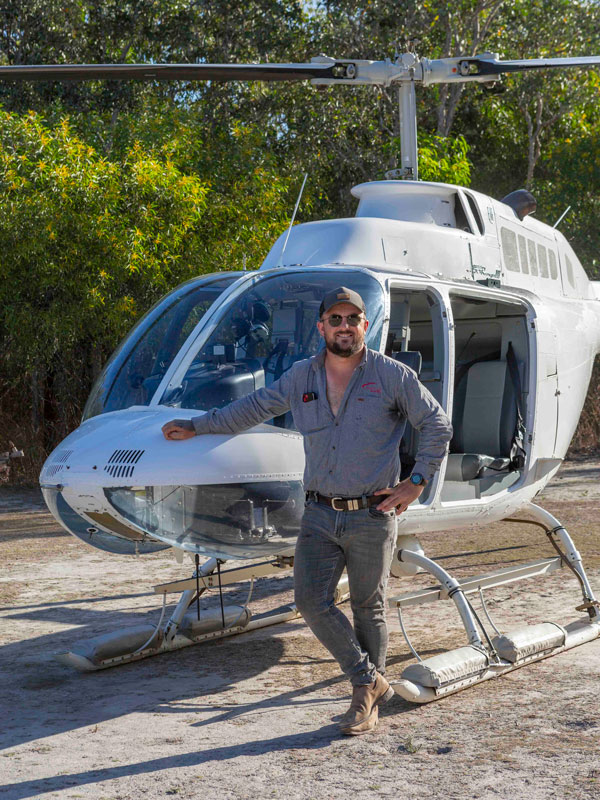
Helicopter pilot Nathan Summerfield. (Image: Mark Daffey)
Lagoons like this are splashed all over the national park, as I discover during a scenic helicopter flight that afternoon. Pilot Nathan Summerfield offers a running commentary as he navigates east over the national park then north, hovering over Saltwater Creek and the North Kennedy River as they coil towards the tidal mudflats bordering Princess Charlotte Bay.
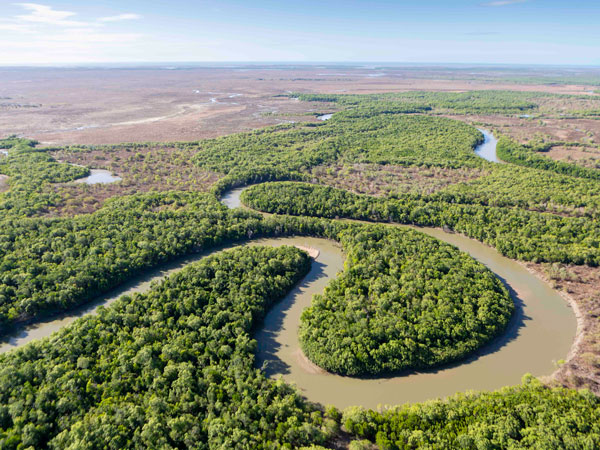
The snaking Kennedy River from above. (Image: Mark Daffey)
As we fly over the inky expanses of Sweetwater Lagoon – “the biggest bit of water around here” according to Nathan – I ask him if it would contain any crocs. “Oh, yeah. There are crocs in every piece of water around here,” he says. “I won’t even wash my hands in a puddle.”
Eventually, I spot one of the reptilian monsters slicing through a forest of green algae in a billabong, leaving a blackened trail behind it.
“All of those lines you see are made by crocs,” says Summerfield. There are lines everywhere I look.
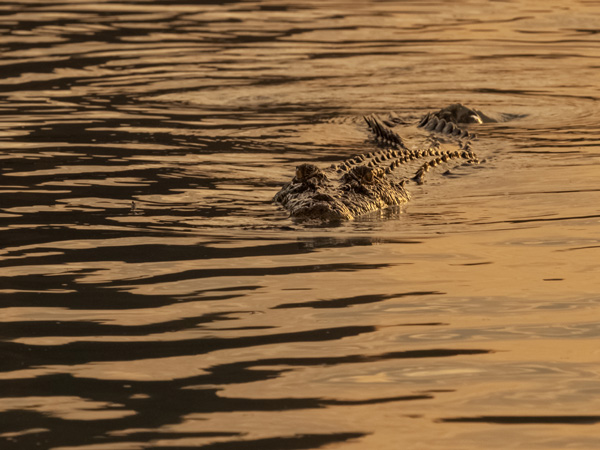
The national park is notorious for saltwater crocodiles. (Image: Mark Daffey)
As we continue to fly over the marshy northern reaches of the park, I spy more and more crocs drying out on mudflats and on slimy riverbanks. But there are also pelicans and jabirus. And a surprising number of wild cattle and pigs wallow about in the lagoons.
“Crocs don’t need to feed too often,” says lodge manager Dan Costantino back at camp. “… the feral pigs are always getting taken.” Better them than me.
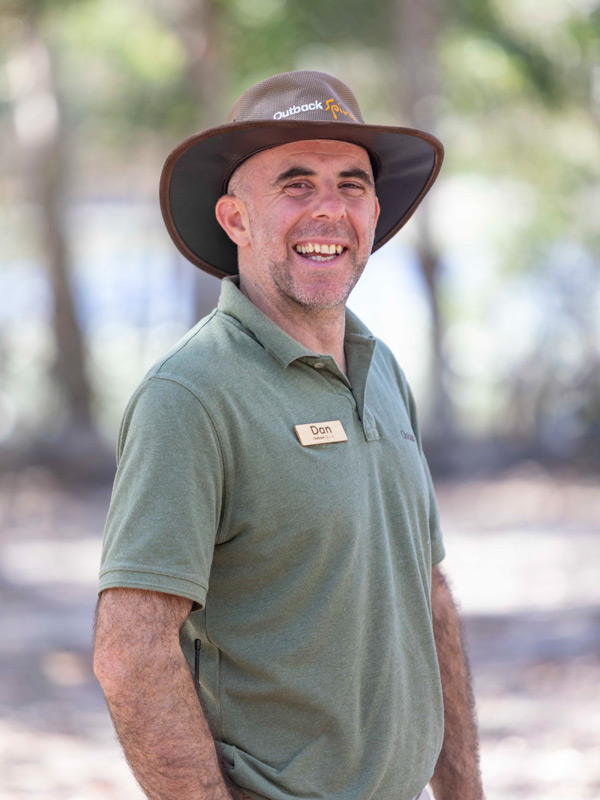
Meet Lodge manager Dan Costantino. (Image: Mark Daffey)
Outback Spirit’s 13-day Cape York Wilderness Adventure tours depart between May and September. The itinerary starts in Cairns/Gimuy and travels north to the tip of Queensland, including stops in Port Douglas, the Daintree, Laura and Thursday Island, among others.
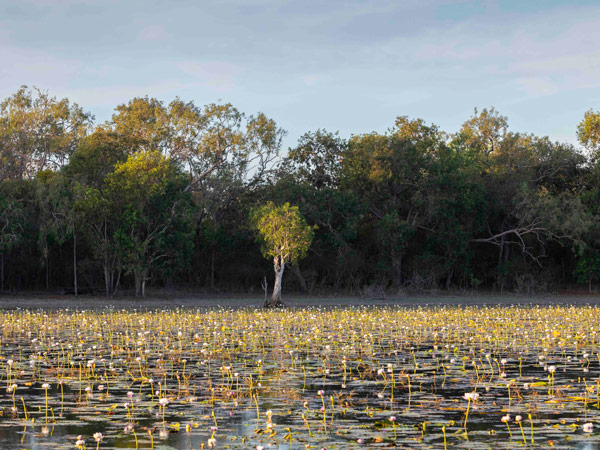
This lilypad-covered blackwater lagoon is the view from Lotusbird Lodge. (Image: Mark Daffey)
Guests stay in comfortable cabin accommodation for two nights at Lotusbird Lodge while they explore Rinyirru National Park. A 45-minute scenic helicopter ride over the national park is included, as well as guided walks and all food and drinks.
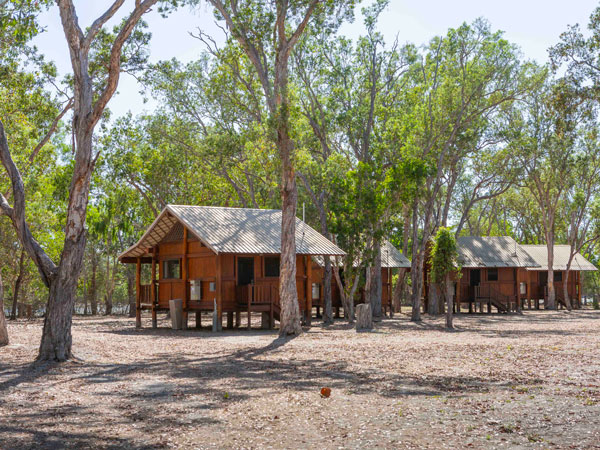
Base yourself at Outback Spirit’s Lotusbird Lodge. (Image: Mark Daffey)
LEAVE YOUR COMMENT